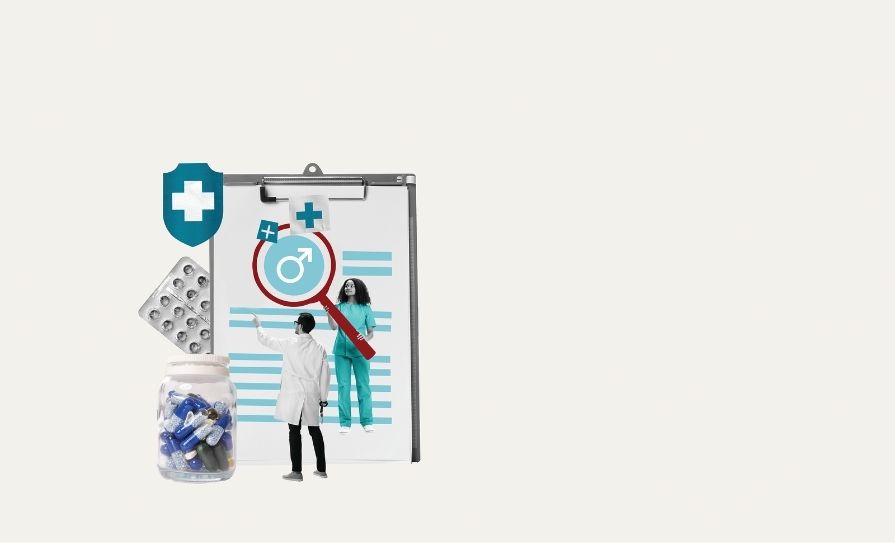Damien O’Brien MPSI provides a clinical overview of coughs and colds, including preventive measures and treatments
Introduction
The common cold is an acute and generally self-limiting viral infection of the upper airway that may occasionally involve the lower respiratory tract. The common cold primarily affects the nose, throat, sinuses, pharynx and larynx. There are many virus strains that can cause the common cold, with rhinoviruses being the most common. However, it can also be caused by adenoviruses, coronaviruses and enteroviruses.1
A cough is a natural defence reflex of the body that involves the sudden expulsion of air from the breathing passage. Coughing can be associated with a wide range of clinical associations and aetiologies. Coughing is important in preventing aspiration and clearing the airways of foreign particles, fluid, microbes and irritants. Although coughing is an important protective mechanism, chronic and excessive coughing can reduce a patient’s quality of life.2 Pharmacists play an important role in the management of common ailments, such as coughs and colds. They offer preventive advice, medication management, patient education and refer patients to other healthcare professionals if necessary.3
Overview
The common cold is one of the most frequently diagnosed complaints in the outpatient setting. It is estimated that adults suffer from the common cold two-to-three times per year, while children may experience up to eight cases per year. The common cold is therefore a significant burden on the healthcare system.
There tends to be an increase in respiratory viruses in the autumn and winter, which then declines coming into summer. Some factors that leave individuals more susceptible to contracting the common cold include close contact with children, smoking, medical conditions such as asthma or allergic rhinitis, and being immunocompromised due to a medical condition (ie, HIV infection) or medical treatment (long-term corticosteroid use). The common cold virus is generally transmitted via airborne respiratory droplets, direct contact with nasal secretions, or contact with contaminated objects. Symptoms can begin as early as 10-to-12 hours after inoculation.1
The symptoms of the common cold are generally predictable and self-limiting. Nasal congestion, rhinorrhoea, sore throat, sneezing, cough, headache and malaise are the most common symptoms associated with the common cold. These symptoms are usually mild-to-moderate in most individuals. Mild fever may also be present, but this is more common in children than in adults. The onset of symptoms is usually within one-to-three days of inoculation, and the duration is generally seven-to-10 days. Complications of the common cold are very rare, but can include secondary bacterial pneumonia or bronchitis. Exacerbation of pre-existing medical conditions, including asthma and chronic obstructive pulmonary disease (COPD), is also possible. If they occur, it is usually in the young, the elderly or the immunosuppressed.1
A cough is among the most common medical complaints when visiting a healthcare professional. Coughing is useful as part of the immune system in protecting against foreign materials, but it can be debilitating and reduce quality of life.
Coughing is associated with a wide range of conditions and is therefore hard to assess properly. Cough can be classified based on duration. An acute cough lasts for up to three weeks and is most often caused by viral respiratory infections, such as the common cold, influenza and acute bronchitis. Other potential causes of an acute cough include acute rhinosinusitis, pertussis, acute exacerbations of COPD, allergic rhinitis, asthma, congestive heart failure, pneumonia and aspiration syndromes.
A subacute cough persists for between three and eight weeks and is often due to lingering irritation of cough receptors after a viral respiratory infection. A chronic cough is defined as a cough that persists for longer than eight weeks. There are many possible causes of chronic cough, and these include asthma, COPD, gastroesophageal reflux disease (GERD), chronic bronchitis, intolerance to angiotensin-converting enzyme inhibitors, cancer, interstitial lung diseases, sleep apnoea and psychosomatic cough.
Pharmacists can screen patients with cough and refer them if necessary. Examples of patients who may need referral include those with weakened immune systems and individuals with symptoms such as shortness of breath, chest pain, coughing up blood, night sweats and unexplained weight loss.2,4
Diagnosis
The common cold is generally a clinical diagnosis and doesn’t require diagnostic testing. It is usually diagnosed by the presence of the classical clinical presentation of rhinovirus infection, alongside the absence of signs of bacterial infection or severe respiratory illness. PCR testing or antigen testing can be used to rule out other respiratory illnesses such as Covid-19 or influenza as part of a differential diagnosis.1
The diagnosis of cough is a clinical observation, as cough is a symptom and not a disease. However, it may be necessary to evaluate and diagnose the underlying cause of the cough. Acute and subacute coughs generally don’t require diagnostic studies, and symptoms can be treated unless there is suspicion of a more serious illness. A full and detailed patient history, alongside an appropriate physical examination, is important in the evaluation.
Chronic cough usually necessitates further investigations. The patient history should include details on duration, cigarette smoking, medication use, occupation, weight loss, relieving factors, aggravating factors, and presence of sputum, fever, haemoptysis or shortness of breath. Diagnostic measures, including chest x-ray and complete pulmonary function tests, can also be useful for a chronic cough.2
Preventive measures
There are several preventive measures that individuals can take to reduce the spread of the common cold and other respiratory viruses. Correct hand hygiene, using tissues when sneezing or coughing and staying home when feeling unwell can all help reduce the risk of spreading the common cold.
The use of ventilation and air filters can also play a role in reducing the spread of respiratory viruses. However, there is no vaccination against the common cold due to the number of viruses involved and the ability of these viruses to mutate. There are vaccinations against viruses that can cause cough, including the influenza and pneumococcal vaccinations. Patients who are eligible for these vaccinations should be encouraged to obtain them, including elderly patients and those with certain chronic diseases.1,5
Treatment
The treatment of the common cold focuses mainly on the relief of symptoms, as there is no cure. Most cases will resolve without pharmacological treatment, but such treatment can help to alleviate symptoms and improve quality of life. There are mucolytics and cough suppressants that can improve cough, while treating the underlying cause of chronic cough is also important.1,2
Non-pharmacological treatment
Non-pharmacological treatments are important in the management of the common cold and cough, particularly in children. Encouraging patients to rest is crucial to support overall recovery. Hydration is also essential in supporting recovery. Furthermore, water helps to thin mucus and can act as a mucolytic.
Saline nasal preparations can help to relieve nasal congestion and improve nasal secretions. Steam inhalation is another method to relieve nasal congestion and soothe the airways. Finally, honey and lemon can be useful for soothing the throat and suppressing a cough. However, honey should not be used in children under the age of 12 months due to the increased risk of botulism.6
Pharmacological treatment
The main objective of pharmacological treatment is to alleviate symptoms and reduce patient discomfort. Obtaining information about clinical symptoms and a full patient history is important in selecting appropriate treatment options. Over-the-counter (OTC) analgesics, such as paracetamol and ibuprofen, are useful in treating aches and pains. First-generation antihistamines, such as brompheniramine and chlorpheniramine, can be effective in providing symptomatic relief. They can reduce sneezing and nasal secretions associated with the common cold, but may cause adverse effects including drowsiness, dry mouth and blurred vision. Second-generation antihistamines cause less sedation but are more useful for allergy symptoms rather than symptoms of the common cold.6
Decongestants
Decongestants cause vasoconstriction of blood vessels in the nasal passage and, therefore, help to reduce nasal congestion. Pseudoephedrine and phenylephrine can be taken orally and are available OTC in Ireland. Oral decongestants are associated with adverse effects such as agitation, hypertension, tachycardia, nausea and dysrhythmia. Xylometazoline is a decongestant that can be used topically to reduce nasal congestion. It is effective for short-term use but should not be used long-term as it can cause rebound congestion.7
Cough suppressants
Cough suppressants can be used to manage a non-productive cough. They work by suppressing the cough reflex in the brain and therefore provide relief from coughing. Codeine is an opioid cough suppressant that used to be the gold standard treatment for cough. However, it is no longer recommended as a first-line treatment due to a lack of evidence of efficacy and the many adverse effects associated with its use, including dependence, drowsiness and constipation.
Dextromethorphan is a non-opioid antitussive that is effective in suppressing coughs caused by upper respiratory tract infections. Dextromethorphan can cause serotonin syndrome, and this should be considered.3
Expectorants and mucolytics
Expectorants and mucolytics can be used in the management of productive coughs. They exert their mechanism of action by increasing sputum volume in the airways and decreasing its viscosity, thereby promoting more effective clearance of mucus. Expectorants and mucolytics can be useful in the treatment of acute upper respiratory tract infections, where excess mucus and cough are symptoms. Carbocisteine and guaifenesin are examples of two medications that are available OTC in Ireland.3
Complementary and alternative medications
Pharmacists should be knowledgeable about alternative remedies and the evidence base for these treatment options. Echinacea preparations have been traditionally used to treat the common cold. However, the evidence base is mixed, with studies suggesting they have no effect on the prevention or treatment of the common cold. The use of vitamin D may have a modest effect on the duration and severity of symptoms when taken prophylactically each day. However, vitamin C does not seem to have a therapeutic effect when taken after the onset of cold symptoms.1,6
The role of the pharmacist
Pharmacists are ideally located in the community to manage ailments such as the common cold and cough, with their role extending beyond the traditional role of dispensing medication. Firstly, pharmacists can assess patients when they first present to the pharmacy. They can identify warning symptoms such as chest pain, shortness of breath and persistent high fever that may require further medical attention. Otherwise, pharmacists can provide expert information on OTC treatment options based on the patient’s symptoms, medical history and current medications to alleviate symptoms.
Pharmacists can advise on the correct and responsible use of medication for the treatment of these ailments. Pharmacists can also provide patient education on non-pharmacological treatment options and preventive measures against the common cold and cough.
Pharmacists have an important role in managing the common cold and cough in certain populations, including children, the elderly, pregnant women and patients with chronic diseases. These groups may require special care, and pharmacists have the knowledge of the safety profiles of treatments to tailor advice to each individual patient’s needs. Finally, pharmacists are also accessible for follow-up care with patients to monitor for complications or provide advice if symptoms persist or worsen.3
References
- Thomas M and Bomar PA (2023). Upper respiratory tract infection. [online] National Library of Medicine. Available at: https://www.ncbi.nlm.nih.gov/books/NBK532961/.
- Sharma S, Hashmi MF and Alhajjaj MS (2023). Cough. [online] PubMed. Available at: https://www.ncbi.nlm.nih.gov/books/NBK493221/.
- Collins JC and Moles RJ (2019). Management of Respiratory Disorders and the Pharmacist’s Role: Cough, Colds, and Sore Throats and Allergies (Including Eyes). Encyclopedia of Pharmacy Practice and Clinical Pharmacy, pp.282–291. doi:https://doi.org/10.1016/b978-0-12-812735-3.00510-0.
- HSE.ie (n.d.). Cough. [online] Available at: https://www2.hse.ie/conditions/cough/.
- HSE.ie (n.d.). Getting the flu vaccine. [online] Available at: https://www2.hse.ie/conditions/flu/get-vaccine/.
- Pappas DE (2018). The Common Cold. [online] National Library of Medicine. Available at: https://www.ncbi.nlm.nih.gov/pmc/articles/PMC7152197/.
- Deckx L, De Sutter AI, Guo L, Mir NA and van Driel ML (2016). Nasal decongestants in monotherapy for the common cold. Cochrane Database of Systematic Reviews. doi:https://doi.org/10.1002/14651858.cd009612.pub2.







